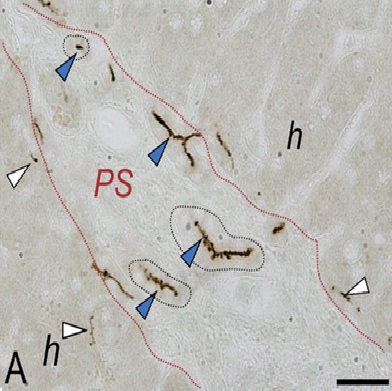The stem cell marker CD133 (Prominin-1) is expressed in various human glandular epithelia.
Human prominin-1 (CD133) is expressed by various stem and progenitor cells originating from diverse sources. In addition to stem cells, its mouse ortholog is expressed in a broad range of adult epithelial cells, where it is selectively concentrated in their apical domain. The lack of detection of prominin-1 in adult human epithelia might be explained, at least in part, by the specificity of the widely used AC133 antibody, which recognizes an epitope that seems dependent on glycosylation. Here we decided to re-examine its expression in adult human tissues, particularly in glandular epithelia, using a novel monoclonal antibody (80B258) generated against the human prominin-1 polypeptide. In examined tissues, we observed 80B258 immunoreactivity at the apical or apicolateral membranes of polarized cells. For instance, we found expression in secretory serous and mucous cells as well as intercalated ducts of the large salivary and lacrimal glands. In sweat glands including the gland of Moll, 80B258 immunoreactivity was found in the secretory (eccrine and apocrine glands) and duct (eccrine glands) portion. In the liver, 80B258 immunoreactivity was identified in the canals of Hering, bile ductules, and small interlobular bile ducts. In the uterus, we detected 80B258 immunoreactivity in endometrial and cervical glands. Together these data show that the overall expression of human prominin-1 is beyond the rare primitive cells, and it seems to be a general marker of apical or apicolateral membrane of glandular epithelia. This manuscript contains online supplemental material at http://www.jhc.org. Please visit this article online to view these materials.

- J. Histochem. Cytochem. 2008 Nov 21;56(11):977-93
- 2008
- Medical Biology
- 18645205
- PubMed
Enabled by:
